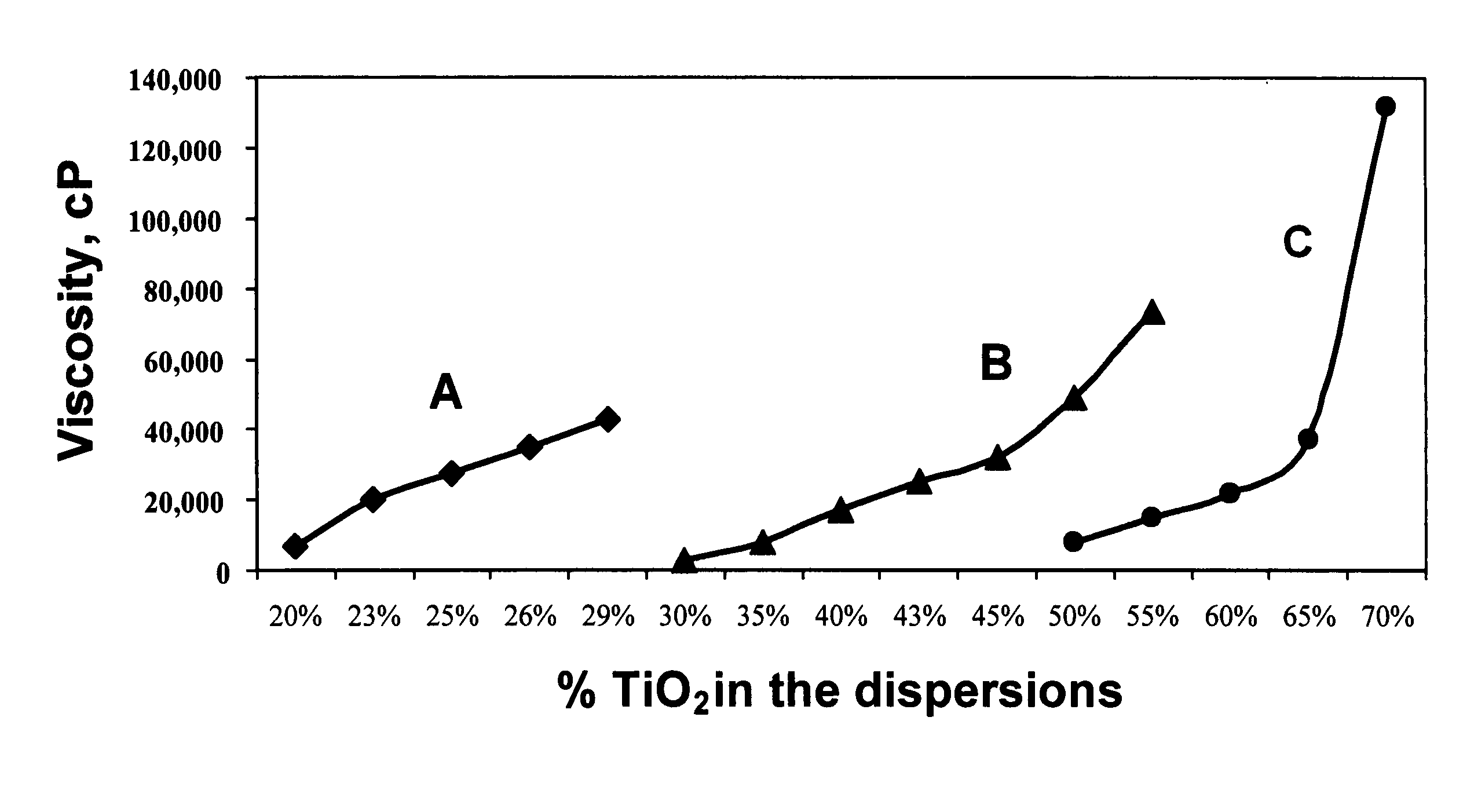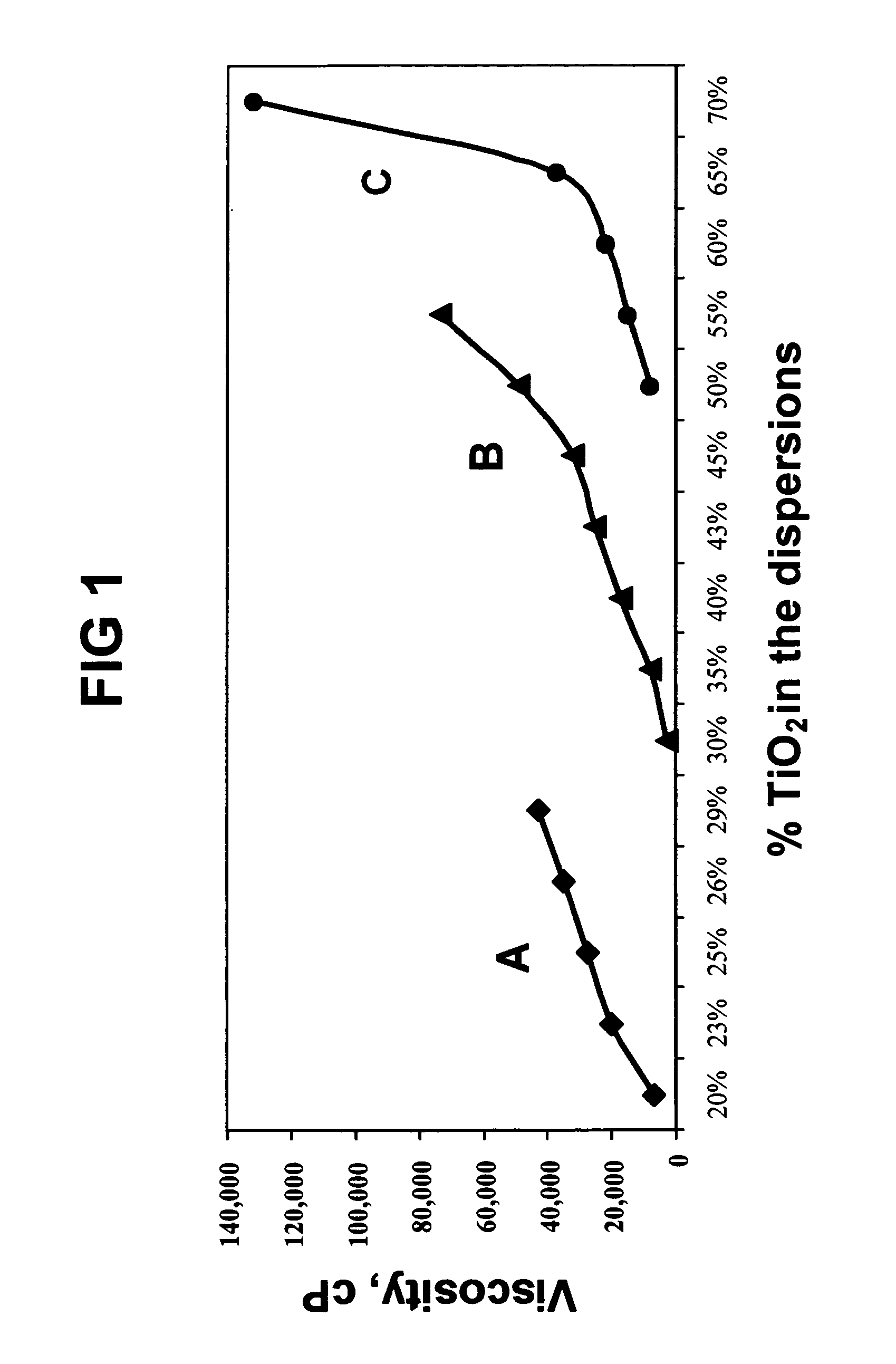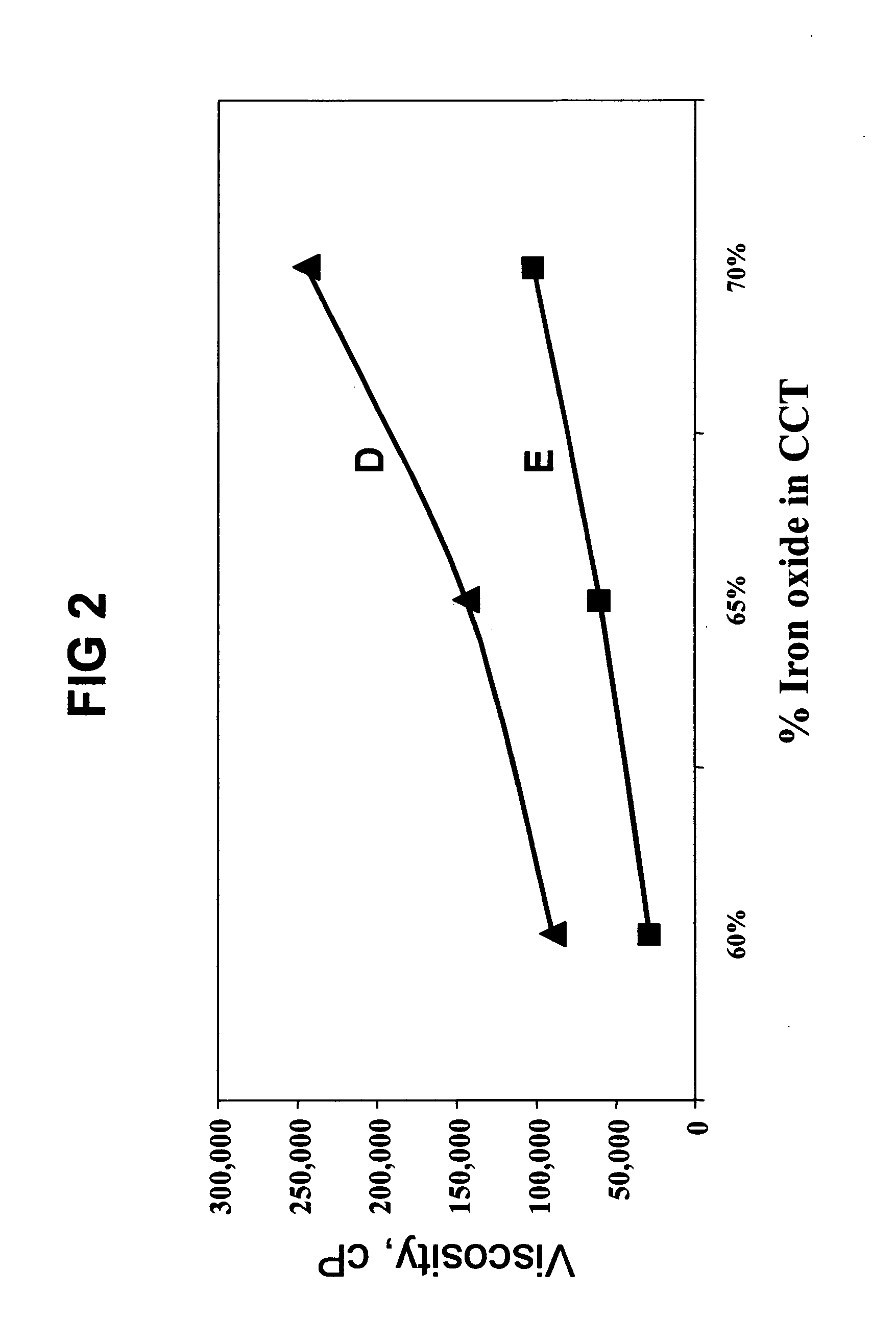Method and compositions for dispersing particulate solids in oil
a technology of particulate solids and compositions, which is applied in the direction of organic active ingredients, synthetic polymeric active ingredients, make-up, etc., can solve the problems of loss of color brightness, opacity and/or ultraviolet light shielding power, and difficulty in dispersing, so as to improve the tactile properties of use, improve the durability and rub-out effect, and improve the effect of dispersibility
- Summary
- Abstract
- Description
- Claims
- Application Information
AI Technical Summary
Benefits of technology
Problems solved by technology
Method used
Image
Examples
example 1
[0105]Table 1 illustrates various anhydrous dispersing compositions according to the invention. The compositions are prepared by mixing all components in a beaker with an overhead mixer initially at room temperature to a temperature of 100° C.
TABLE 1Exemplary anhydrous dispersing compositionsDispersingComposition No.1234567891011Weight %Polyhydroxystearic25351050545acidStyrene / maleic814151anhydride*Maleinized87%1050152010Polybutadiene#+Polyisobutene75404090succinic anhydridelecithin55155Isostearic acid201210105Dimer acid201052535Oleth-3 phosphate44105Sorbitan oleate2222Glyceryl stearate3CitrateMethyl glucose3isotearateOctyl Palmitate352540Caprylic / Capric4047152534TriglycerideSoya Oil2555total100100100100100100100100100100100*SMA 31890.#Ricon 131 M5.+PCA 9050 by Soltex Inc.
example 2
[0106]This study compares the dispersing power of a dispersing composition used according to the method of the present invention, specifically Composition 2 (Table 1) with a commercial dispersing oil CRODAPERSE low energy disperse system.
[0107]Non-surface treated white titanium dioxide pigment was added into CRODAPERSE oil incrementally and mixed using a COWLES disperser to prepare dispersions having different pigment concentration. Similarly, two other series of dispersions were prepared. One dispersion contained the titanium dioxide pigment in just a carrier oil composed of caprylic / capric triglycerides (CCT) and one set of dispersions made with titanium dioxide in combination with the dispersing composition 2 of Table 1 and caprylic / capric triglyceride oil. The weight % of the dispersing composition 2 relative to pigment was kept at 4% (i.e., 4 gm of composition 2 per 100 gm of TiO2). Composition 2 mixed easily with the caprylic / capric triglyceride oil at room temperature. The vi...
example 3
[0111]This study compared the dispersion of black iron oxide pigments, which had undergone complicated surface chemical treatment with octyltriethoxysilane, and the dispersion with of non-surface-treated iron oxide pigment but using dispersing composition No. 2 blended with caprylic / capric triglycerides as the dispersing medium. The concentration of dispersing composition was 8% by weight relative to the weight of the pigment. The non-surface treated black iron oxide pigment in this case was iron oxide C33134 obtained from Sun Chemicals, while the surface treated pigment was Unipure black LC 989 ASEM, commercially available from Sensient Technologies Inc. at Milwaukee, Wis.
[0112]Dispersions with CCT solvent were prepared as in Example 2.
[0113]The results are presented in FIG. 2. Curve D is the viscosities of dispersions of the surface treated pigment dispersed in CCT while curve E corresponds to the viscosities of dispersions of the untreated pigment in the same dispersion medium co...
PUM
| Property | Measurement | Unit |
|---|---|---|
| molecular weight | aaaaa | aaaaa |
| molecular weight | aaaaa | aaaaa |
| viscosity | aaaaa | aaaaa |
Abstract
Description
Claims
Application Information
 Login to View More
Login to View More - R&D
- Intellectual Property
- Life Sciences
- Materials
- Tech Scout
- Unparalleled Data Quality
- Higher Quality Content
- 60% Fewer Hallucinations
Browse by: Latest US Patents, China's latest patents, Technical Efficacy Thesaurus, Application Domain, Technology Topic, Popular Technical Reports.
© 2025 PatSnap. All rights reserved.Legal|Privacy policy|Modern Slavery Act Transparency Statement|Sitemap|About US| Contact US: help@patsnap.com



